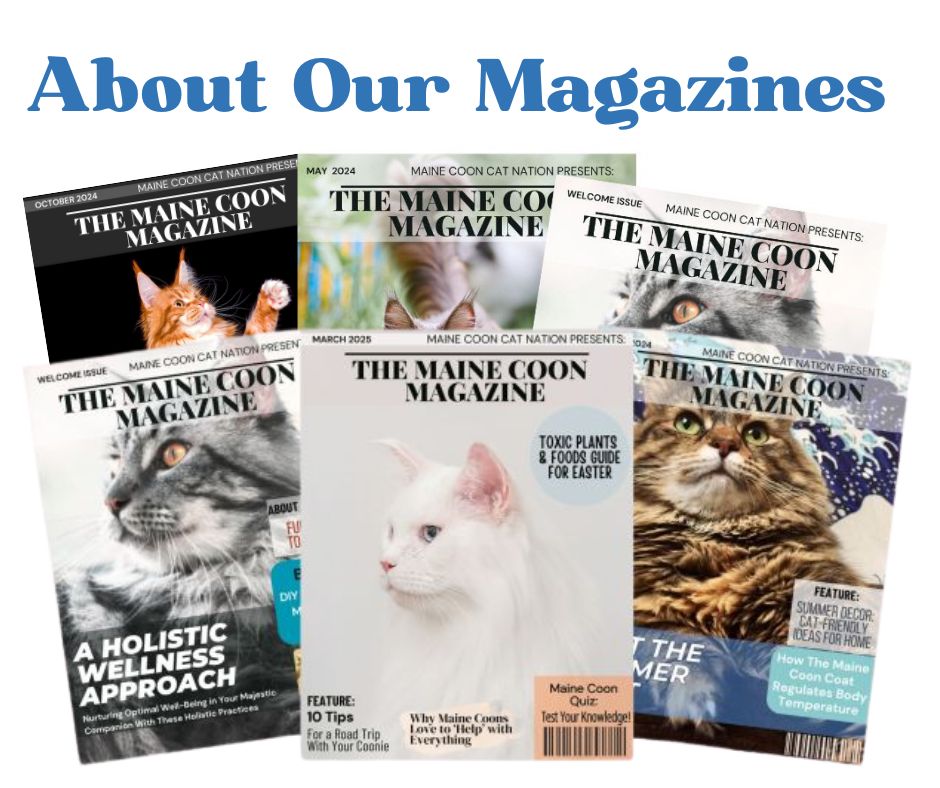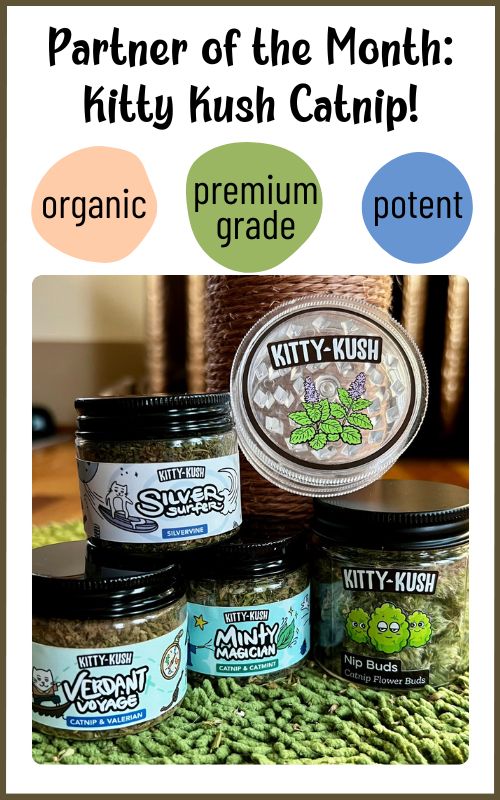- Home
- Maine Coon Food
- Royal Canin Cat Food Review
Disclosure: this site is reader-supported. When you buy through links on our site, we may earn a small commission, at no extra cost to you.
Royal Canin Cat Food Review
A Candid Inspection
Our Royal Canin cat food review looks closely at their formula marketed toward Maine Coon owners. What makes it a breed-specific food? Here, we examine its ingredients and what it offers our big kitties.
This is one of many brands on the market. One thing sets it apart for many Maine Coon Cat owners:
There is a formula which is specifically marketed toward Maine Coon cats and their owners. According to their website, "Royal Canin Maine Coon Adult Cat Food is formulated to meet the nutritional needs of purebred Maine Coon cats 15 months and older." [1]
Maine Coon cat owners want nothing but the best for their cats. We want to know, "which cat tree is best for my Maine Coon?" and "which litter box is best for my Maine Coon cat?"
But we especially want to know, "What is the best diet for my Maine Coon Cat?" When we see that Royal Canin has a formula made especially for our big fluffy cats, it's easy to assume this is the best way to go.
Covered in This Review:
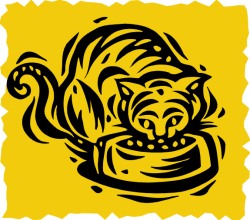
It's important to note that this page is only about Royal Canin dry kibble formula.
I have not researched any of their other formulas. They also offer dog food, wet and dry, as well as formulas for weight management, urinary care, hairballs, kittens and more.
The principles in this article could be applied to the other formulas (and in fact, all other brands!) when looking at their ingredient labels.
Is a One-Size-Fits-All Approach Wise?
There was a time that I had plans to try it out and do a full Royal Canin cat food review to share our findings. But as it turns out, this is not our feline diet of choice. I won't be able to share personal experience feeding this brand.
Nutrition is one of the most important subjects when it comes to our cat's care health.
Every Maine Coon owner wants the best nutrition for their Coonie. Well, there are so many options on the market!
Comparing cat food brands is a lot like asking "which is the best family sedan?"
There are high-quality cars known for safety and durability, fancy and expensive ones with bells and whistles, and there are the lower-cost ones that may not last as long but get the job done for a while.
Then, you must take specific needs into consideration. How many seats will you need? How important is gas mileage for your commute? And so forth.
It's the same with cat food! There is a wonderful array of holistic, organic, high-quality products available. Then there are the lower-cost ones made with lower cost ingredients.
There are also specific formulas that may meet your cat's specific needs for hairball control, oral health, urinary health, etc.
It is up to each and every individual cat owner to learn how to read a label. That's the only way to know what your cat is eating.
Their health and longevity depend on it! This means reading beyond the word "natural" or "organic" on the front of the package. Even some "holistic" choices have undesirable ingredients.
You don't have to know every ingredient. The second half of an ingredient list tends to list items we can't pronounce, and some of them are actually just vitamins!
So back to our Royal Canin cat food review. What makes it a Maine Coon cat food? Here is what they offer:
Royal Canin's "Maine Coon" Formula:
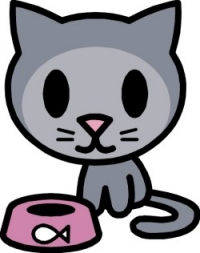
- For joint health, omega 3 and omega 6 fatty acids
- Heart-health promoting nutrients such as tourine, DHA and EPA.
- For skin and coat: "breed-specific nutrients"
That's it for 'special Maine Coon' ingredients!
It's important to note that most, if not all, high-quality brands have these same ingredients in similar amounts.
What else makes Royal Canin Maine Coon specific?
Their claim to fame is larger kibble. It's true that a big Maine Coon cat, with it's big jaw tends to swallow food whole. Then they may get sick.
The larger kibble forces the cat to slow down and chew. The cats like the taste, too. And if you read any consumer reviews you will find owners who say their cat loves the food and has a nice shiny coat to boot.
Sold yet? Many owners stop at this point and buy a bag. Seems a perfect fit! But now we are going to take a closer look at the label of this particular Royal Canin formula.
The Importance of Ingredients:
Here are four categories of undesirable ingredients to avoid:
- Meat by-products
- Corn
- Wheat
- Soy
These are known as being allergenic, indigestible, the culprits of many health issues. Other ingredients to avoid or research include brewer's yeast, rice, sugar, salt, cellulose, meat or poultry meal.
Note: The definition of meat by-products is simply the parts of the animal that are left after it has been rendered clean of meat. So this means ground-up organs, necks, intestines, feet and in the case of chicken, undeveloped eggs. And no meat.
The Great Corn Debate
Technology and food processing have come a long way in the last decade, and it can be argued that some of these ingredients (corn gluten meal for example) are an easily digestible and a scientifically safe source of protein for felines.
But most pet lovers still see these ingredients as "cheap fillers" - a way to add protein to the 'guaranteed analysis' on the label without the cost of adding high quality, real, human-grade meat; leading to larger profits for the company.
Corn, as we all know is mass-produced.
When It is wet-milled, or steeped in water, it breaks down into different components. This is how corn starch, corn oil and corn syrup are made.
A natural by-product of this process is corn gluten meal (which doesn't actually contain gluten). The corn gluten meal is then used in multiple kinds of animal feed.
Proponents point out it's an excellent source of carbohydrates. It is naturally sweet, and cats tend to like the flavor.
But the flip-side is that dry kibble contains far more carbs than are needed! Felines on a dry food diet are more prone to obesity and diabetes due to it's higher carbohydrate content.
What do ingredients have to do with our Royal Canin cat food review? Everything!
My Experience: We used to have vomiting problems with our cats.
By coincidence, we switched a few years ago to Wellness Indoor Formula, which has no corn, corn gluten, wheat or soy.
The vomit problem immediately vanished and became a thing of the past.
We just realized one day that they cats don't throw up anymore! I'm not going to chance it and ever go back to a food containing corn.
Royal Canin Cat Food Review: Ingredient List
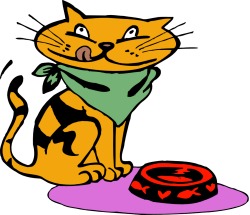
I checked it out, I considered trying it out. But something stopped me. The ingredient list. I will share the top 21 ingredients here:
- chicken by-product meal
- brewers rice
- chicken fat
- corn
- corn gluten meal
- wheat gluten
- brown rice
- pea fiber
- rice hulls
- natural flavors
- dried plain beet pulp
- fish oil
- vegetable oil
- sodium silico aluminate
- calcium sulfate
- sodium pyrophosphate
- potassium chloride
- L-lysine, fructooligosaccharides
- DL-methionine
- salt
For your reference, here is the ingredient list from the first edition of this article in 2011:
Chicken meal, brown rice, corn gluten meal, chicken fat, ground corn, natural chicken flavor, rice, wheat gluten, pea fiber, dried beet pulp (sugar removed), rice hulls, soya oil, anchovy oil (source of EPA/DHA), L-lysine, psyllium seed husk, sodium silico aluminate, potassium chloride, calcium sulfate, DL-methionine, fructo-oligosaccharides
Now, here are the first 19 ingredients of the dry kibble we ended up using the longest, Wellness Indoor Formula: (Our Maine Coons enjoyed wet meals as well!)
- Deboned Chicken
- Chicken Meal
- Rice
- Herring Meal
- Barley
- Oats
- Ground Brown Rice
- Chicken Fat
- Tomato Pomace
- Ground Flaxseed
- Natural Chicken Flavor
- Potassium Chloride
- Chicory Root Extract
- Choline Chloride
- Taurine
- Calcium Chloride
- Vitamin E Supplement
- L-Carnitine
- Zinc Proteinate
Please note: as mentioned, Alice's digestive system disagreed with a grain-free diet. I would have loved to continue feeding my Maine Coons with Wellness Core or Wellness Indoor Grain-Free formula. For the purpose of comparison and review, I'll list ingredients on the formula that worked for us.
See the differences? Let's look at the first ingredient in 2011. Chicken Meal. It's acceptable.
It is basically flesh and skin, and it may or may not include bone, but does not include feathers, heads, feet, or entrails.
So it's all right but inferior to actual chicken meat, which is the first ingredient in Wellness.
And in 2023, it's chicken by-product meal. So that means it contains no actual meat at all.
"But my cat loves it! So it must be good. Cats know by instinct."
As mentioned in our wet vs dry food article, dry kibble is given a coating as the final step in it manufacturing process.
This coating is a mix of preservatives and flavors to make it taste appealing to cats. So if your cat loves it, that means the company has designed a delicious coating.
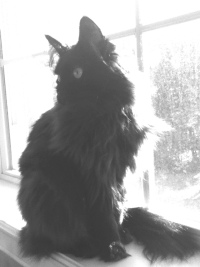
On to the grains. Rice and barley, ground or not, are grains. They are used as a binder, and filler.
They are not ideal, but will be found in higher end foods. Basically any food that is not grain-free will have some grains. We are not feeding a grain-free diet.
I did try it, and it had adverse effects on Alice's digestive system. She lost weight and became sick. Grain-free is great for cats, ideal even, but not my Alice.
This Royal Canin Maine Coon food contains rice as the second ingredient. Then it lists corn gluten meal and ground corn! Oh, no! Then it goes on to include wheat gluten. In fact, it's only meat was the chicken meal which is now chicken by-product meal.
So, the ingredients are the reason I won't be able to review it. I simply can't feed corn to my cats.
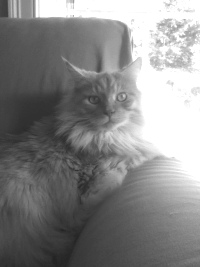
And looking at all the other ingredients, even without corn or corn gluten, there are not as many whole or real foods high in the Royal Canin ingredient list.
Our cats thrived on Wellness. And, in recent years so many raw and freeze-dried raw foods have become available. We now currently enjoy feeding Stella & Chewy's freeze-dried raw.
Royal Canin is popular among Maine Coon cat owners. Many people use it, love it, and their cats do well with it.
Although it seemed to be the obvious choice when we were new Coonie owners, we didn't end up feeding it once we did our own independent Royal Canin cat food review.
Learning to read a label is one of the best gifts you can give your pet!
Top of Royal Canin Cat Food Review
References:
Maine Coon Adult Dry Cat Food | Royal Canin US. (n.d.). https://www.royalcanin.com/us/cats/products/retail-products/maine-coon-adult-2550
Jericho, J. A. (2023). Worst ingredients in cat food. Jess Caticles. https://www.caticles.com/ingredients-in-cat-food/
You, I. a. L. A. (2024, January 23). What is Chicken By-Product Meal in Dog & Cat Food? I and Love and You. https://iandloveandyou.com/blogs/pet-blog/what-is-chicken-by-product-meal
Recent Articles
-
Today's Features
Apr 16, 25 09:54 PM
Today we have two classic Memory Lane pages to share!
Murphy & Candy Cane: Double the Maine Coon Charm - This adorable Maine Coon duo from our 2011 Photo Albums - Murphy and Candy Cane - brought doubl… -
Memory Lane Month Begins!
Apr 15, 25 10:22 PM
We're thrilled to start our "Memory Lane Month" event by visiting some cherished moments from our community! We're in the process of restoring meaningful community stories like this one, to preserve t… -
Will a Maine Coon Protect Its Owner From Danger or an Intruder?
Apr 09, 25 10:41 PM
Plenty of people are curious: Will a Maine Coon protect its owner if something happens? Let’s talk about what this means, and what kind of protector a Coonie is.
